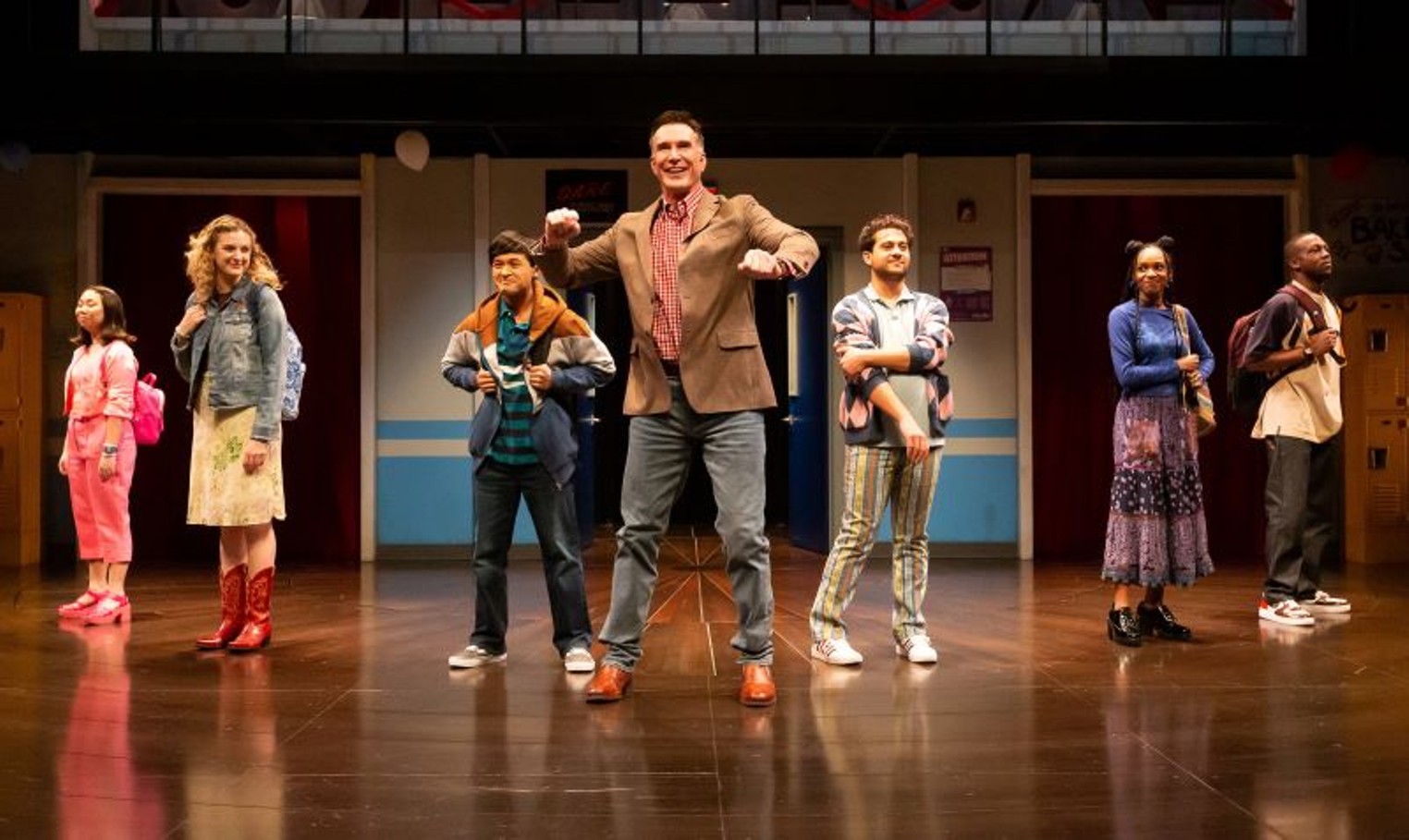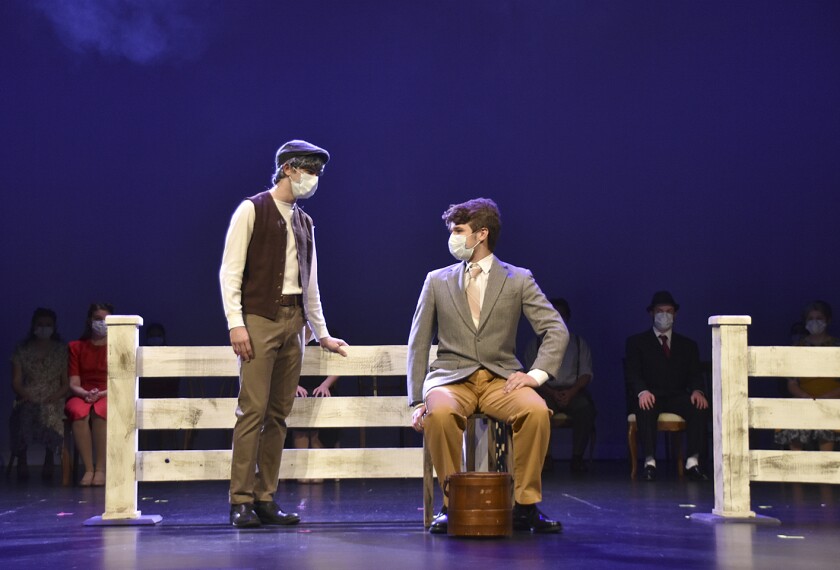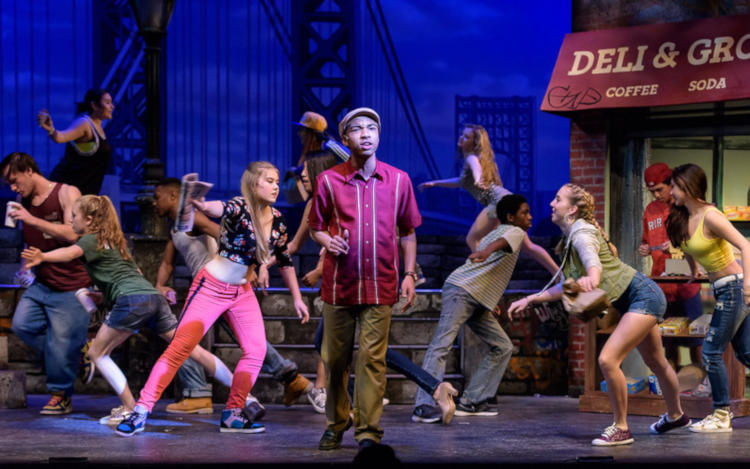How to Create a Play for High School
Many high schools produce a play each year, and usually a teacher is in charge of creating the play, selecting assistants and supervising all activities including the rehearsals and performances.
Imagine that the teacher in charge wants you to learn how to create a play. The first thing you are asked to do is make a list of every task that needs to be performed to create and present a play, and a descriptive title for every person who needs to be involved. Assume the play will include speaking, singing and dancing roles, scenery, props and costumes. Go ahead and make your list.
When you have finished your list, compare it with the list and follow the instructions.
Instructions: Look at the topics below, and place an X next to each topic
that was on your list.
_ Actors _Singers _Dancers _Scripts _Playbill _Sheet Music _Scenery
_ Choreography _Props _Costumes _Lighting design and
theatrical lights _Audio design and recording and playing equipment
_Playwright _Director _Casting Director _Music Director _Choreographer
_Scenery Manager _Props Manager _Costume Manager _Stage Manager
_Lighting Designer _Lighting Technician (equipment installation/operation)
_Audio Designer _Audio Technician (equipment installation/operation)

Image Source: https://www.houstonpress.com/arts/review-high-school-play-a-nostalgia-fest-at-the-alley-12763467
A. Questions to be asked when creating a play
- What is the plot of the play? A plot describes the main events of a play, and is created and presented by the writer as an interrelated sequence of events. The plot may have a theme, which is an idea that recurs in or pervades a work of art or literature, such as love, honesty, happiness.
- Who or what are the characters in the play? Examples: humans, robots, an animal.
- What is/are the location(s) of the play (the setting)? Examples: anonymous – could be anywhere; in the United States; in another country; in a city; on a ranch; in a mansion or bungalow; on a train or a boat; in a stadium.
- What is the story line? That is, what happens, to which characters, at which locations, and when (time is also part of the setting). And what are the emotions of the characters when things happen to them?
- Here are the titles and roles of everyone needed to create and perform
a play.
- Playwright – The person who wrote the play. The content of the play is published as a script and\or if it is a musical, sheet music, which contains the notes and words (lyrics).
- Director – Responsible for supervising every task and person involved with the play. The director tries to coach the actors to carry out whatever message the playwright intended. The director may also cast performers for each role and cast or hire crew members (stage manager, audio and lighting staff). The director prepares or approves all schedules associated with the cast and crew.
- Casting Director – If casting is not done by the director, it is done by the casting director, with the possible exception that singers and musicians may be cast by the Music Director.
- Music Director – If not already selected by the playwright, the music director selects the music, and decides if it will be sung and/or played, live and/or recorded. Will guide each performer in rehearsals and in the final performances. May also cast singers and musicians.
- Choreographer – Will decide on the movements of each dancer or even a singer or actor while dancing or singing. May work with the Music Director to select the music. Will guide each performer in rehearsals and in the final performances to insure their performances are compatible with the choreography chosen.
- Scenery Manager – Constructs and/or finds the scenery that will be used during the show. Examples of items that make up the scenery may include large items such as desks, beds or bookcases, which are called set pieces, and they may be on casters. Scenery may also include partitions or fabrics that are rolled up and fastened to pipes above the stage, then dropped down at different times during the play. The scenery must be compatible with the setting, the set pieces, the props, the costumes and actions onstage.
- Props Manager – Responsible for managing props, which are any items not considered set pieces; props are smaller than set pieces. Examples are: books, table lamps, eating utensils, pictures, coffee pots.
- Costume Manager – Finds, and if necessary, alters clothing and finds accessories that are appropriate for the setting (location and time period) and actions required in the play. Costumes and accessories are known as wardrobe.
- Stage Manager – Responsible for notifying the actors of the rehearsal schedule and insuring their readiness to perform, and acting as the primary liaison between each actor and the various managers and directors. The stage manager will usually call the execution of the cues for backstage managers, lighting and audio crews (a cue is a signal for something to happen, such as lowering scenery on to the stage, a lighting blackout, or beginning to play music).
- Lighting Designer and Lighting Technicians: the designer creates the lighting plot, which includes the kinds of lighting equipment to be used, where each item is to be installed, and its properties (color, fade times, blackouts, stationary or moving). The technicians are responsible for installing the equipment and operating it. Most theaters and schools have permanently installed equipment, some of which can be relocated as needed.
- Audio Designer and Audio Technicians: the designer creates the audio plot, which includes the kinds of audio equipment to be used, where each movable item (such as microphones) is to be placed, and when audio recordings or equipment are to be used. Audio equipment can include a mixer, body and wireless microphones, microphone stands, CD and DVD discs and players, and speakers and amplifiers. The technicians are responsible for placing and operating the equipment.

Image Source: https://www.edweek.org/teaching-learning/theater-educators-struggle-to-keep-shows-going-amid-covid-19/2020/11

Image Source: https://theaterlove.com/musicals-for-high-school/
B. Additional Information
- Blocking and choreography: Each actor has to know where he or she will be on stage (this is called blocking) and what each actor is doing on stage (for example, singing, talking, standing still, dancing, running, jumping). The movements that each actor does on stage are called choreography.
- Audio: What kinds of microphones will be used to record actors speaking and/or singing? Will the microphones be on stands or will they be attached to the actors’ bodies (body mikes)? What equipment will be used to broadcast what is spoken or sung by the actors? If the play includes music, will it come from a live band or orchestra, or from music that is recorded? Will the music accompany performers who are singing? What kind of music will be in the play – will it be rock and roll, or folk or classical or rap?
- Lighting: How will we light up the actors and the stage so the audience can see them and any set pieces and props that are on the stage? When do we use a spotlight? When do we use other lights to light up the stage? What colors will the lights be when they are on? Will the light beams be steady, or moving around? Will they be bright or dim? When will they fade out (slowly become dimmer until they go out) or go out suddenly (called a blackout)?
- Playbill: Its purpose is to inform the audience about who is in the play, what character they are playing, what scene they are in, in what order the scenes are being performed and details about the setting. The playbill contains this information as a handout given to each audience member when they enter the theater.
